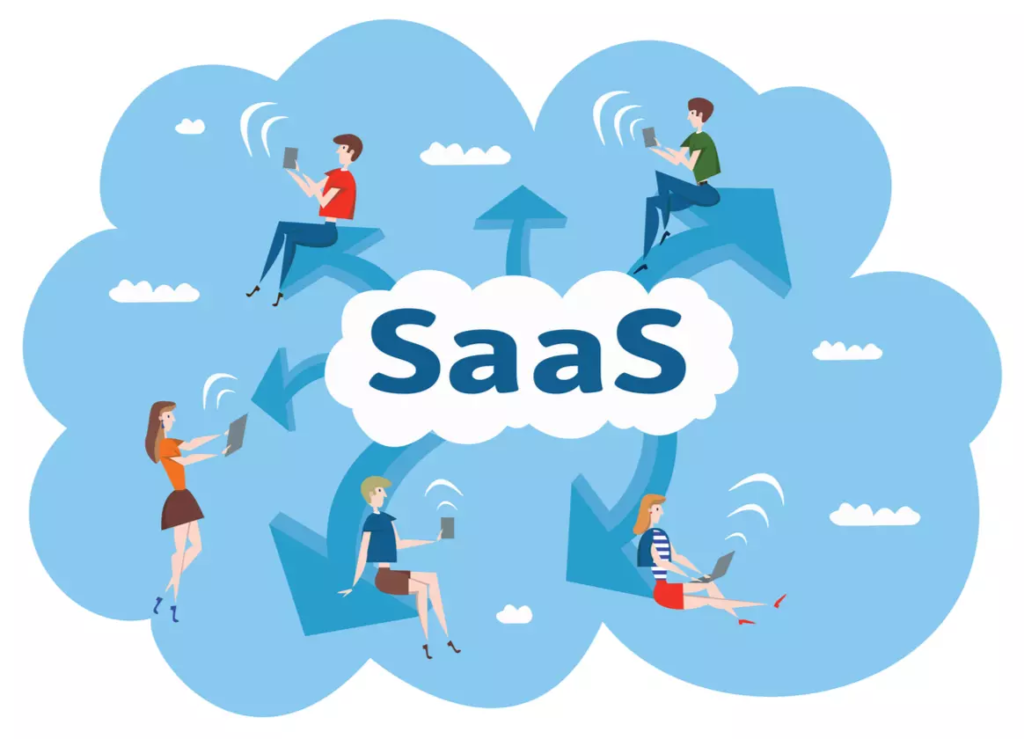SaaS
SaaS

What is SaaS?
Software as a service (or SaaS) is a way of delivering applications over the Internet—as a service. Instead of installing and maintaining software, you simply access it via the Internet, freeing yourself from complex software and hardware management.
SaaS applications are sometimes called Web-based software, on-demand software, or hosted software. Whatever the name, SaaS applications run on a SaaS provider’s servers. The provider manages access to the application, including security, availability, and performance.
SaaS Characteristics and Features
An excellent way to understand the SaaS model is to think of it like a bank. A bank protects each customer’s privacy while providing reliable, secure, and efficient service. SaaS does the same.
The Saas model helps your business use its resources more efficiently. By harnessing the power of SaaS features, your business will improve customisation, lower costs and become better connected to those who matter. The application achieves this through four customisable SaaS characteristics.
SaaS Characteristics
SaaS Multi-Tenant Architecture
Multi-tenancy is an architecture where all SaaS vendor clients and applications share a single, common infrastructure and code base that is centrally maintained. This architecture allows vendors to innovate more quickly, saving development time previously spent on maintaining outdated code.
Easy Customisation with SaaS
Users can easily customise applications to fit their business processes without affecting the shared infrastructure. A SaaS model supports each user and company’s unique customisations changes and preserves them through regular upgrades. This means SaaS providers can make upgrades more often, with less customer risk and lower adoption costs.
Better Access From Network Devices
A SaaS model allows your business to remotely access data from any networked device, making it easy to manage privileges, monitor data use, and ensure many users can see the same information simultaneously.
SaaS Harnesses the Consumer Web
Anyone familiar with Amazon.com or My Yahoo! will be familiar with the Web interface of typical SaaS applications. With the SaaS model, you can customise with point-and-click ease, making the weeks or months it takes to update traditional business software seem hopelessly old-fashioned.
SaaS Features
If reducing costs and growing your business is a priority, utilising SaaS features will allow sales and business teams to engage more effectively with stakeholders as well as existing and prospective clients. Here are the top 5 ways SaaS features can improve your business.
- Boost lead management through better identification and monitoring during the sales cycle.
- Improve sales and marketing collaboration by capturing and sharing prospect and customer insights better.
- Improves marketing automation by streamlining your digital marketing campaigns.
- Improves data management.
- Improves contact management through better storing, organising and tracking of information about your customers, prospects and sales leads.
SaaS v On-Premises Software
In the past, businesses bought and relied on packaged software; however, this “on-premises” software had several drawbacks.
The Drawbacks of On-Premises Packaged software:
- Requires in-house systems that need to be regularly upgraded by an internal IT department.
- Requires frequent maintenance that can lead to IT word pressure and bottlenecks for projects.
- Architecture and coding differences can make it difficult when integrating multiple systems.
- Increased upfront software, licensing and server costs.
- The CRM software and hardware costs could make it unaffordable for small businesses or challenging to scale up quickly in response to growth or change.
